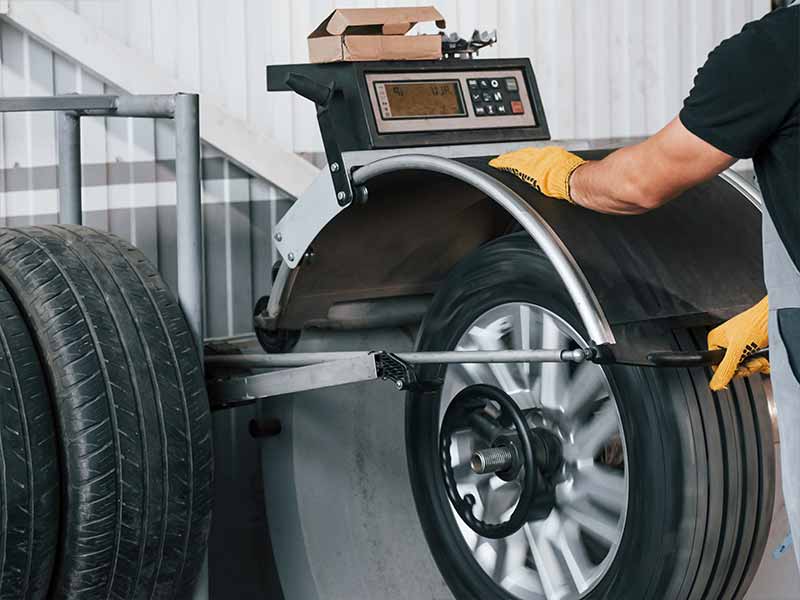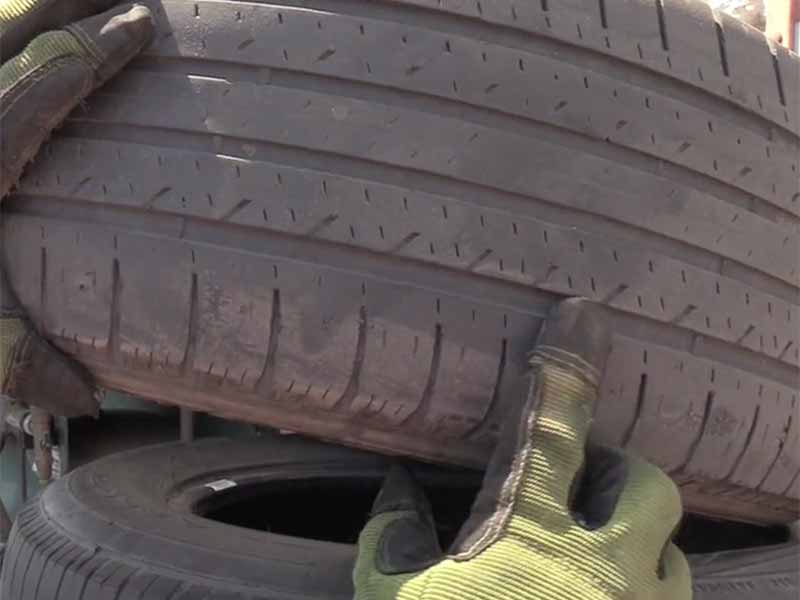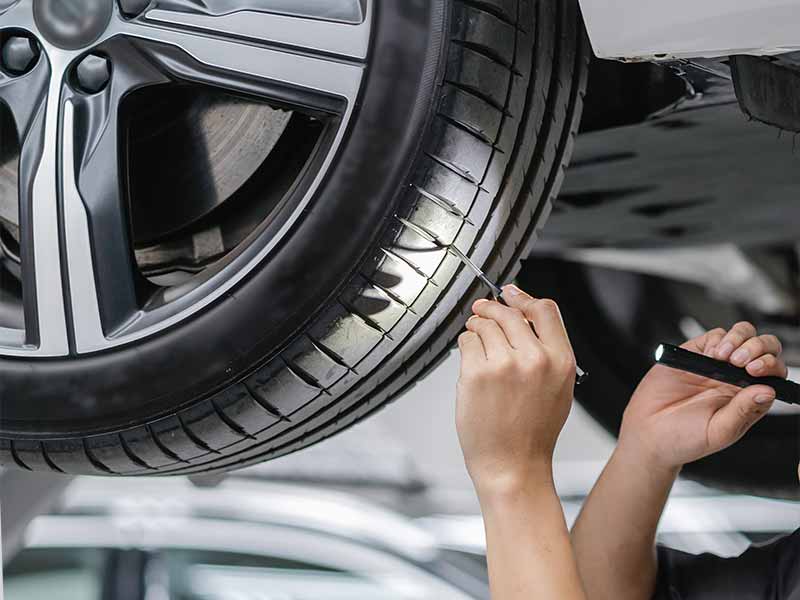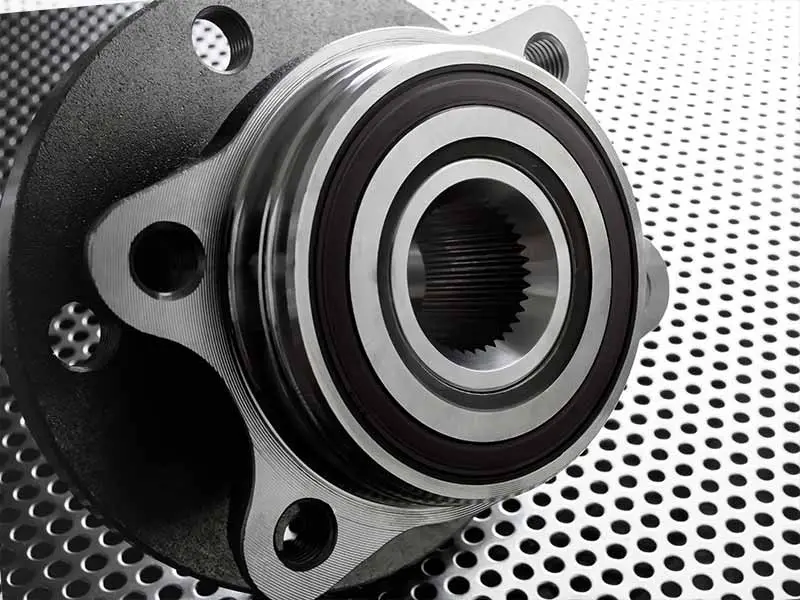You’re driving along when suddenly you hear a strange “womp womp” sound, or maybe it’s more like the distant thumping of a helicopter. You wonder, could it be your tires? Ignoring it could turn a small problem into a costly repair.
If you’re curious about what unbalanced tires typically sound like—and what other issues could be making that unsettling noise—read on to find your answers.
Unbalanced Tire Noise
Unbalanced tire noise is a repetitive, low-pitched “womp womp” sound that generally becomes more noticeable as you speed up. This issue can also lead to vibrations in the steering wheel, uneven tire wear, and a less stable driving experience.
In this article, we’ll explore the symptoms of unbalanced tires, focusing particularly on the noises you should be attentive to. You’ll also learn how to differentiate between tire noises and other vehicle sounds, ensuring that you’re treating the right problem.
Finally, we’ll walk you through fixing unbalanced tires, whether you’re a DIYer or prefer the expertise of a tire shop.
Let’s take a closer look.

What are Unbalanced Tires?
Unbalanced tires are tires that don’t have an equal distribution of weight around their circumference. This happens when small weights attached to the wheel assembly get knocked out of place or when the tires wear out unevenly over time.
What Causes Tires to Become Unbalanced?
Tires can become unbalanced due to:
- Wear and Tear: Over time, tires naturally wear down. If the wear is uneven across the tire, it becomes unbalanced.
- Potholes or Rough Roads: Hitting a pothole or driving on a rough road can knock the weights in your wheel assembly out of place, causing unbalance.
- Improper Installation: Sometimes, if a tire isn’t mounted correctly onto the wheel assembly, it can be unbalanced from the start.
How Unbalanced Tires Affect the Wheel Assembly
When tires are unbalanced, the wheel assembly is also affected. This can create a wobble or shaking sensation, usually felt in the steering wheel. Unbalanced tires can even lead to uneven tread wear, making the problem worse over time.
How Do They Differ from Balanced Tires?
- Vibration: Balanced tires do not cause your steering wheel to shake, while unbalanced tires often cause noticeable vibrations.
- Noise: Balanced tires usually run quietly, but unbalanced tires can create different types of noise like “womp womp” or loud noise at highway speeds.
- Tire Wear: Balanced tires show even wear over time, while unbalanced tires often show uneven tread wear.
Connection to Wheel Alignment and Tire Balancing
While both are crucial for a smooth and safe driving experience, it’s important to differentiate between wheel alignment and tire balancing:
- Wheel Alignment: This is about adjusting the angles of the wheels so they’re parallel to each other and perpendicular to the ground.
- Tire Balancing: This is about making sure the weight of the tire is evenly distributed around the wheel assembly.
Knowing the difference can help you better diagnose whether you have a tire balance issue or a wheel alignment issue.

Common Symptoms of Unbalanced Tires
Before diving into the noise-related symptoms, let’s identify the more general signs that could indicate your tires are unbalanced. These can include:
- Steering Wheel Vibrations: If your steering wheel shakes, especially at higher speeds, this is often a symptom of unbalanced tires.
- Uneven Tread Wear: Take a look at your tires. If you see that the wear isn’t uniform across the tire, this is a red flag.
- Unsteady Driving Experience: If the ride feels wobbly or unstable, especially when accelerating, this could also be due to unbalanced tires.
Listening for Noise-Related Symptoms
Recognizing the sounds that come from unbalanced tires can be key to diagnosing the issue. Here are some of the noises to listen for:
- Womp Womp Noise: This is a low, repetitive noise that usually becomes more noticeable as you speed up.
- Loud Noise at Highway Speeds: When driving at high speeds, unbalanced tires can produce a constant, loud noise.
- Low-Speed Noise: Sometimes you might hear strange noises even when driving at low speeds; it could be due to unbalanced tires.
Front vs Rear: Location-Specific Symptoms
Understanding where the symptoms are coming from can help in quicker diagnosis and treatment.
Unbalanced Front Tire Symptoms:
- Steering Wheel Vibrations: More prominent in the steering wheel.
- Wandering Steering: The steering might not feel as precise as usual.
Rear Tire Out of Balance Symptoms:
- Seat or Floor Vibrations: You might feel vibrations in the seat or floor rather than the steering wheel.
- General Vehicle Shaking: The entire vehicle might feel unstable, especially at higher speeds.
Recognizing Unbalanced Tire Wobble
Another key symptom of unbalanced tires is the wobble. It’s more than just a vibration:
- Visibility: Sometimes the wobble is severe enough that you can see the tire visibly moving back and forth when the car is in motion.
- Sensation: Unlike the vibration, a wobble feels like the car is almost rocking back and forth.

How to Diagnose Unbalanced Tires
Believe it or not, you can do some simple checks to figure out if your tires are unbalanced. Here are some DIY methods:
- Visual Inspection for Uneven Wear: Look closely at your tires. If you notice uneven tread wear, it’s likely your tires are unbalanced.
- Spin Test: Jack up your car safely and spin the tires. If they wobble while spinning, they’re probably unbalanced.
- Drive Test: Take note of any vibrations in the steering wheel or odd noises while driving, especially at high speeds. These are telltale signs.
When to Visit the Pros: Consulting Tire Shops
Sometimes it’s best to leave it to the experts. Here are indications that you should consult a professional:
- Persistent Vibrations: If you’ve noticed long-lasting vibrations that don’t go away, it’s time to consult a professional.
- Severe Wobble: A wobble is a severe symptom that should be addressed immediately to prevent dangerous situations.
- Inability to Identify the Issue: If you’ve tried DIY methods and are still unsure, professional diagnosis is the way to go.
What Professionals Do
So what can you expect at the tire shop? Professionals have specialized equipment and skills to diagnose tire issues:
- Balance Check Machines: These machines spin the tires at high speeds to detect any imbalances accurately.
- Close Inspection: Mechanics will also closely inspect the tires for uneven tread wear or damage that could contribute to imbalance.

Differentiating Between Tire Noise and Other Sounds
Understanding the source of the noises your vehicle makes can be vital for its maintenance and your safety. Tire noises can sometimes be confused with other types of vehicle sounds. Below, we break down how to differentiate between tire noise and other common sounds you might encounter.
Wheel Bearing Noise vs Tire Noise
Both wheel bearing noise and tire noise can become evident when driving, but they have distinct characteristics.
- Wheel Bearing Noise: This usually manifests as a high-pitched squeal that gets louder as the vehicle accelerates. Unlike tire noise, wheel bearing noise remains consistent whether you’re turning the vehicle or driving straight.
- Tire Noise: Sounds from unbalanced or worn-out tires are generally lower in pitch and may come across as a “womp womp” or a constant loud noise, especially at highway speeds. These noises often change when you’re turning the vehicle.
Knowing these differences can help you pinpoint the source of the sound and address it more effectively.
What a Misaligned Tire Sounds Like
Misaligned tires create a unique set of sounds, quite different from the noises produced by unbalanced or damaged tires.
- Screeching Noise: A misaligned tire often makes a screeching sound, especially when making turns.
- Uneven Rolling Sound: Sometimes, you’ll also hear an uneven rolling or thumping sound as the misaligned tire doesn’t make consistent contact with the road.
If you hear these noises and suspect a misalignment, it’s best to consult a professional for a wheel alignment check.
Why Some Tires Sound Like a Helicopter
Hearing a noise that resembles a helicopter can be unsettling. This loud, continuous noise can happen for several reasons:
- Severe Imbalance or Damage: A very imbalanced or damaged tire can produce a loud, rhythmic thumping sound that might resemble a helicopter’s rotor blades.
- Tread Separation: Sometimes, the tread on a tire can separate from the body, causing a helicopter-like noise due to the uneven rolling and flapping of the detached tread.
If your tires are making a sound that resembles a helicopter, it’s critical to stop driving and consult a professional immediately. Such a noise could indicate a severe issue that poses a safety risk.
Resources
Below are some links you may find helpful when learning about tires
- How to tell which tire is out of balance – WikiHow
- Bent rims and unbalanced tires: Vehicle vibration 101 – Discount Tire
Final Thoughts
Unbalanced tires can manifest through a range of symptoms, from unsettling noises like “womp womp” to vibrations in your steering wheel. Recognizing these signs is the first step toward resolving the problem.
Whether you’re a hands-on car owner who loves DIY solutions or someone who prefers leaving it to the pros, this guide offers actionable advice for diagnosing and treating unbalanced tires.
Remember, addressing this issue not only ensures a smoother ride but also prolongs the life of your tires and enhances your overall road safety.
Good luck and happy motoring.





